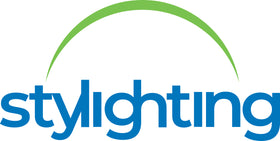Lighting plays a role in the efficiency and safety of an industrial space. In fact, the layout of your LED lighting can affect productivity, energy consumption, and employee well-being. Whether you're retrofitting an existing industrial space or outfitting a new one, you have several factors to consider when optimizing your lighting layout.
Deciding on Placement for Maximum Impact
Placement alters the effectiveness of the LED lighting system. Even if you have the best high-lumen LED bulbs out there, poor positioning can lead to lackluster lighting throughout your facility. Since industrial spaces often require varying levels of brightness across different zones, such as workstations, storage areas, and corridors, you should position your LED fixtures in a way that provides uniform illumination. This will reduce shadowing and glare, particularly in areas where workers carry out precision tasks.
You can achieve this by mounting high-lumen linear fixtures or high bays over assembly lines for consistent light distribution. Additionally, optimize the spacing of fixtures based on ceiling height and the type of LED fixture used, as inadequate spacing can result in dim or overly bright areas.
Implementing Dimming and Control Systems
Advanced dimming and control systems are essential for maximizing efficiency in industrial settings. Adjustable dimming allows facilities to tailor lighting levels based on real-time needs, which can reduce energy usage during non-peak hours.
Integrating smart controls with motion sensors or programmable schedules brings even greater advantages. For instance, motion-activated fixtures in storage warehouses or break rooms keep lights on when needed. Implementing compatible systems with Internet of Things (IoT) technology allows managers to monitor energy consumption in real time and remotely.
Utilizing Daylight Harvesting Techniques
Daylight harvesting is an underutilized technique in industrial facilities, but it can enhance sustainability and lower energy expenses. Leverage natural light from windows or skylights, and program LED fixtures to dim during daylight hours. This not only saves on electricity bills but also creates a more pleasant and productive work environment.
Modern daylight sensors can adjust brightness in real time based on changing daylight conditions. Careful planning is necessary to provide functional areas, such as quality control or inspection zones, with adequate brightness as daylight intensifies or fades.
Considering Emergency and Safety Lighting
No plan for optimizing LED lighting layouts in industrial spaces is complete without addressing emergency and safety requirements. LED fixtures for exit pathways, staircases, or backup illumination during power outages should meet the rigorous standards of regulatory bodies like OSHA or NFPA.
Installing emergency backup systems with long-lasting battery packs keeps areas visible during outages, mitigates hazards, and supports smooth evacuations if necessary. Additionally, color-coded safety lighting can enhance operational safety while demarcating restricted zones or highlighting critical equipment to aid navigation.

